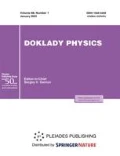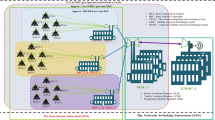Abstract
In this study, changes in temperature extremes in Russia are considered and the impact of these changes on the balance sheets of Russian power systems is analyzed. On the basis of the current meteorological observations and energy statistics, the change observed in extreme climatic characteristics over the past seventy years is calculated and its impact on power-grid regimes is estimated. It is established that the climate changes in Russia manifesting themselves in increasing air temperature in all regions and all seasons lead to a slowdown in the growth of winter and an increase in the growth of summer peak loads in almost all power grids, thereby contributing to an increase in the reliability of the energy supply. At the same time, disruptions of the electricity supply may arise in the southern energy-deficient regions in the summer as a result of violating the intersystem links and operation modes of generating facilities due to weather and climatic factors.




Similar content being viewed by others
REFERENCES
D. J. Arent, R. S. J. Tol, E. Faust, J. P. Hella, S. Kumar, K. M. Strzepek, F. L. Toth, and D. Yan, Climate Change 2014: Impacts, Adaptation, and Vulnerability. Part A: Global and Sectoral Aspects (Cambridge Univ. Press, Cambridge, 2014).
Second Assessment Report of Rosgidromet on Climate Change and Its Consequences on the Territory of the Russian Federation, Ed. by V. M. Kattsov and S. M. Semenov (Rosgidromet, Moscow, 2014) [in Russian].
V. V. Klimenko, E. V. Fedotova, and A. G. Tereshin, Energy 142, 1010 (2018). https://doi.org/10.1016/j.energy.2017.10.069
V. V. Klimenko, A. V. Klimenko, A. G. Tereshin, and E. V. Fedotova, Therm. Eng. 65 (5), 247 (2018). https://doi.org/10.1134/S0040601518050051
I. N. Belova, A. S. Ginzburg, and L. A. Krivenok, Energy Procedia 149, 373 (2018). https://doi.org/10.1016/j.egypro.2018.08.201
W. S. Jaglom, J. R. McFarland, M. F. Colley, C. B. Mack, B. Venkatesh, R. L. Miller, J. Haydel, P. A. Schultz, B. Perkins, J. H. Casola, J. A. Martinich, P. Cross, M. J. Kolian, and S. Kayin, Energy Policy 73, 524 (2014). https://doi.org/10.1016/j.enpol.2014.04.032
V. V. Klimenko, A. S. Ginzburg, P. F. Demchenko, A. G. Tereshin, I. N. Belova, and E. V. Kasilova, Dokl. Phys. 61, 521 (2016). https://doi.org/10.1134/S1028335816100050
V. V. Klimenko, A. G. Tereshin, and E. V. Kasilova, Dokl. Phys. 62 (11), 527 (2017).
V. G. Semenov, Nov. Teplosnabzh., No. 1, 12 (2017).
J. A. Añel, M. Fernández-González, X. Labandeira, X. López-Otero, and L. de la Torre, Atmosphere 8 (11), 209 (2017). https://doi.org/10.3390/atmos8110209
D. M. Santágata, P. Castesana, C. E. Rössler, and D. R. Gómez, Energy Policy 106, 404 (2017). https://doi.org/10.1016/j.enpol.2017.04.006
J. Hanski, T. Rosqvist, and D. Crawford-Brown, Reg. Environ. Change 18 (6), 1801 (2018). https://doi.org/10.1007/s10113-018-1312-z
P. Alipour, S. Mukherjee, and R. Nateghi, Energy 185, 1143 (2019). https://doi.org/10.1016/j.energy.2019.07.074
V. V. Klimenko and O. V. Mikushina, Energ. Politika, No. 5, 35 (2001).
P. A. Gunin, N. S. Serpokrylov, and Yu. A. Leikin, Vestn. Univ. Druzhby Nar., Ser. Ekol. Bezop. Zhiznedeyat., No. 3, 93 (2010).
ACKNOWLEDGMENTS
This study used data from the Federal State Statistics Service (Rosstat, www.gks.ru), the System Operator of unified power system of Russia (SO of UPS, www.so-ups.ru), the All-Russia Research Institute of Hydrometeorological Information—World DataCenter of Roshydromet (RIHMI-WDC, www.meteo.ru), and the State Atomic Energy Corporation (Rosatom, www.rosatom.ru).
Funding
This study was supported by the Russian Science Foundation, project no. 16-17-00114.
Author information
Authors and Affiliations
Corresponding author
Additional information
Translated by V. Bukhanov
Rights and permissions
About this article
Cite this article
Klimenko, V.V., Ginzburg, A.S., Fedotova, E.V. et al. Heat Waves: A New Danger for the Russian Power System. Dokl. Phys. 65, 349–354 (2020). https://doi.org/10.1134/S1028335820090050
Received:
Revised:
Accepted:
Published:
Issue Date:
DOI: https://doi.org/10.1134/S1028335820090050




